Chinese Boxing Synthesis DVDs
Hand/Arm Board

Hand - Arm
Hand/Arm Board on the Chinese Boxing Synthesis Curriculum picks a dozen of the important striking actions that are needed. While there are many more than a dozen one can use the ones picked represent the most used angles that are needed in striking. These angles can have various weapons. For instance a back hand strike can be with the back of the hand or if rotated 90 degrees can use the side (spade) of the hand or one could use the palm side of the arm to strike from the same angle. In the Hand Board one also learns about projection and power on many of the techniques shown. Finally on all of the CB Boards we take the technique shown and then put it into typical uses in the Chinese Boxing Encounter.

Foot - Leg
In the kicking series we divide the kicks into categories: Speed Kicks with the Lead Leg, Power Kicks with the Lead Leg, Power Kicks with the Rear Leg, Stop Kicks and a misc. category. Kicks in Chinese Boxing are primarily done to facilitate the total picture of the outcome and should not change the rhythm while going forward. If a kick causes one to lose timing that he would normally have with regular steps going forward, then it is rarely used.

Defenders
The Defenders Board refers to set ups and covering actions. Usually we don't say blocks but deflections and coverages. The purpose of any coverage is to lead to a counter as soon as possible. So rarely do we use a Defender to try to break someone's arm but usually we are moving away from force and not confronting power. We use categories on the defenders as well. Those that move toward the opponent, those that move backward, those that move side ward, those that use two arms and cover a lot of space, and finally knee protection. Again, while these are not the only Defenders they are certainly vital ones.
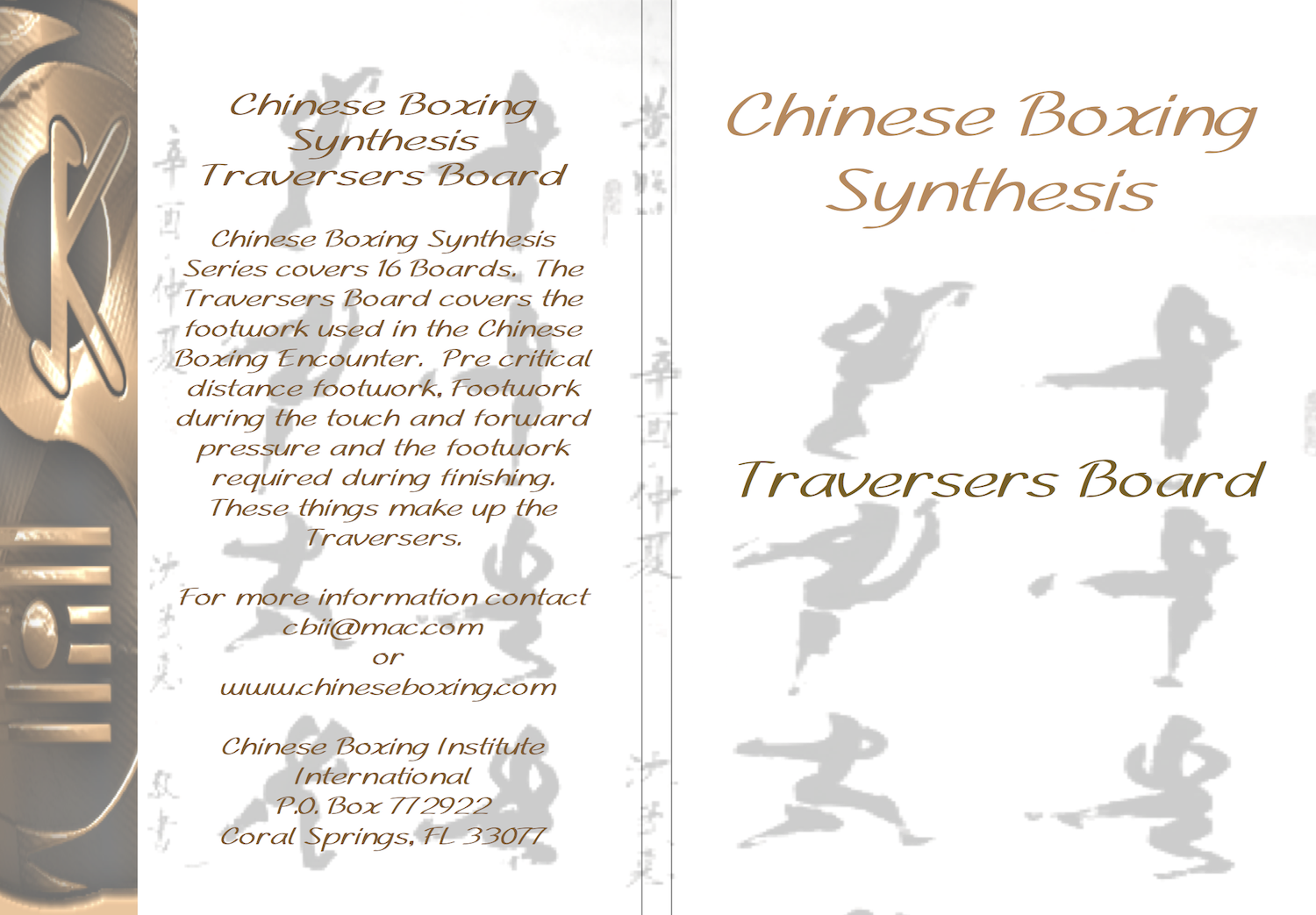
Traverser
The Traversers Board refers to the footwork of Chinese Boxing. This area may well be the most important in Chinese Boxing. If you are not in position you can not do the things you know how to do. Foot work gets you to the right position on balance to execute projection etc. The first nine items are the foot works we feel one needs in fighting and the last three are footwork drills which pertain to the three entry skills of the encounter which are Offense, Yield and Counter and Stop Hit. This begins to build in a footwork which is not normal to many arts. The uniques part of our footwork is the Advance Step.
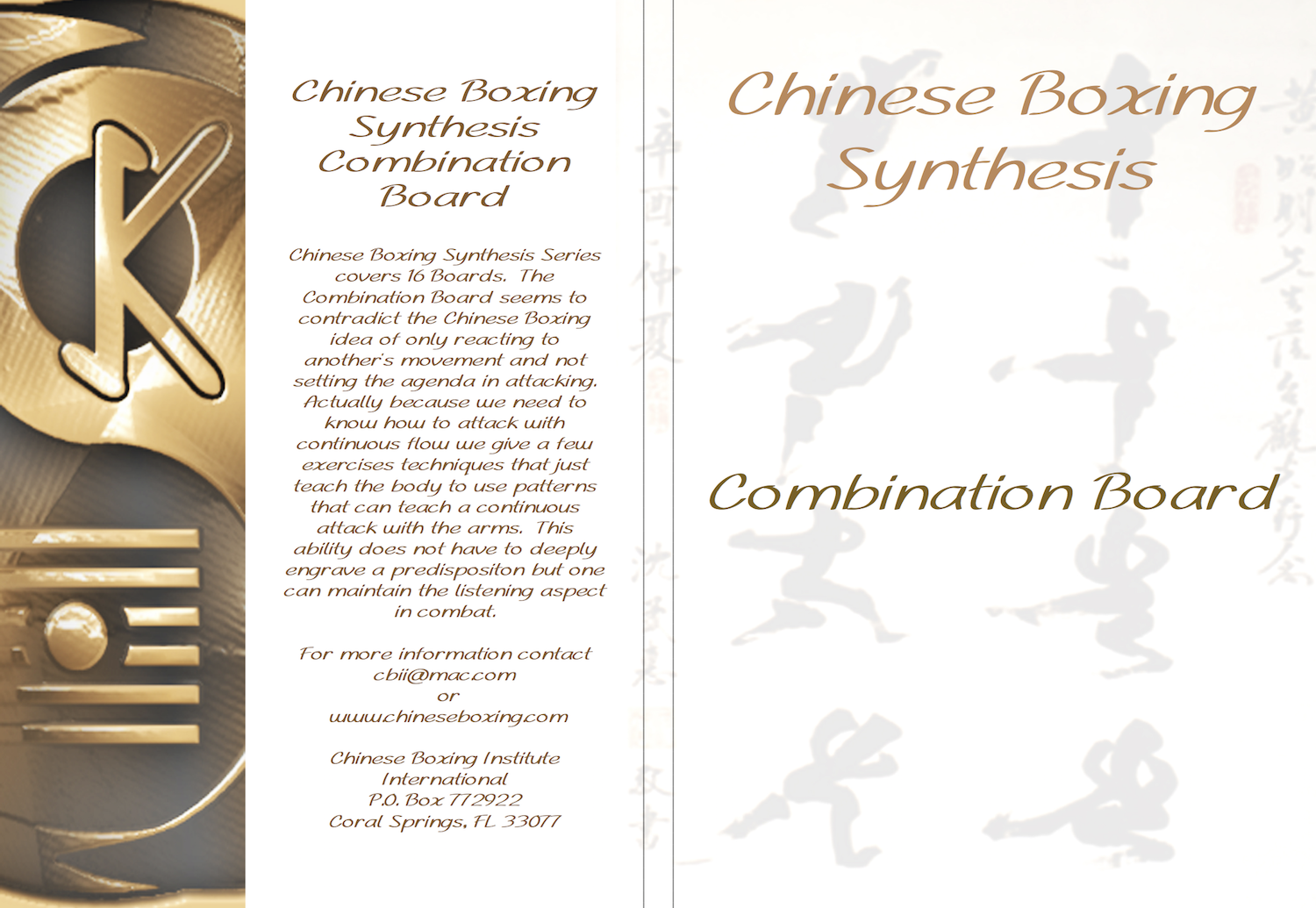
Combination
Combinations are a bit of a contradiction in Chinese Boxing in that one of our concepts is to feed off the opponent and respond to what is coming by instinct and touch. In realistic fighting there are times where the moment indicates aggressive attack and one must learn to put things together in combination without being inefficient. So we pick a few of what can be countless combinations to develop useful aggressive attacking that fits into natural motion.
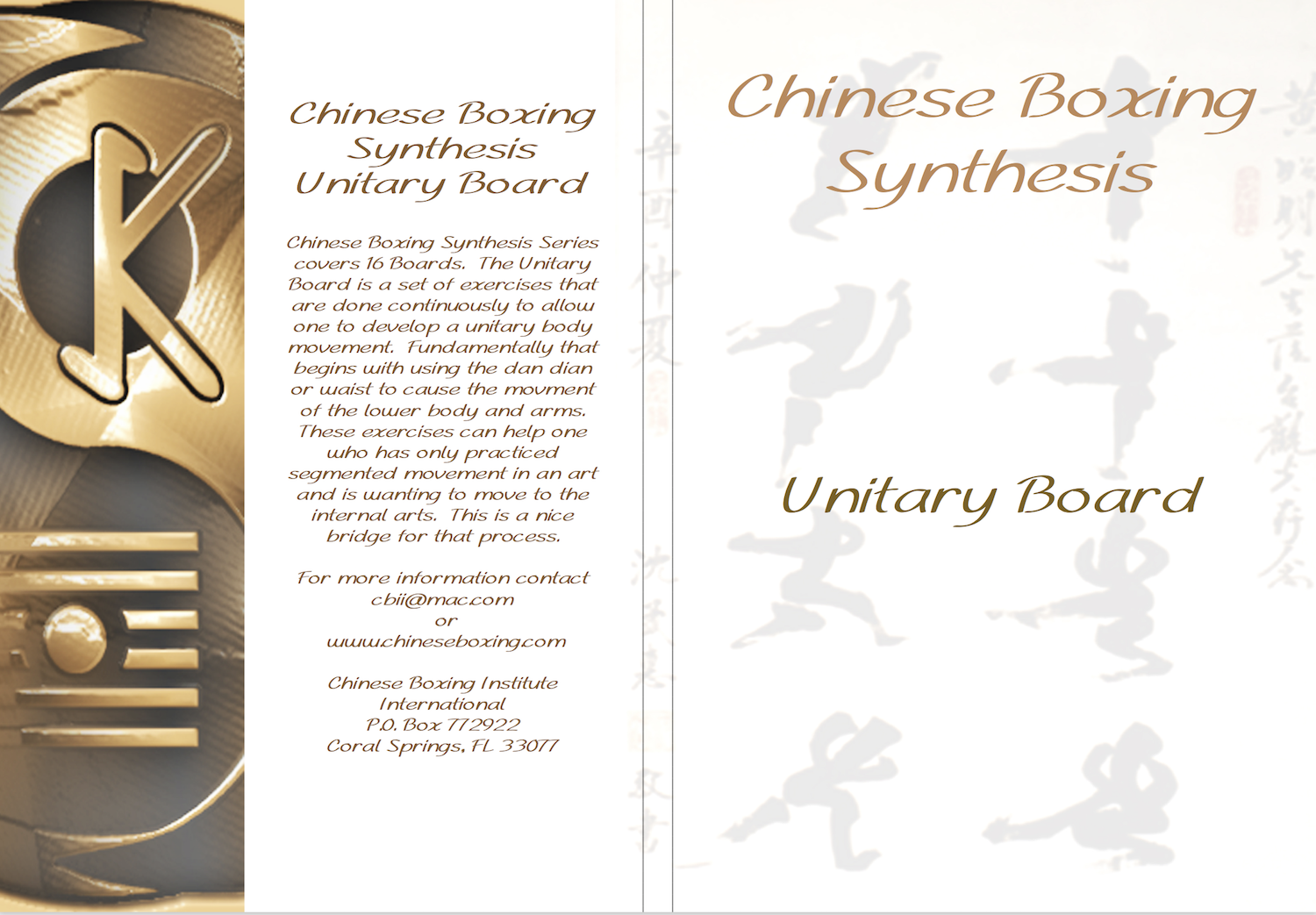
Unitary
Unitary movement is a requirement in all Internal Martial Arts. Unitary has degrees and the goal in most internal arts is to maximize this Unified movement. Walu provides a number of unitary exercises at a faster clip than for example Tai Chi's normal pace. These exercises are very helpful especially for those who come from a type of movement that is hard, robotic or segmented. Relaxation, structure and moving from the dan tian or waist is mostly used with another aspect developed refer to Tsun Kwan or nerve launch motion. These actions are inserted into the already unified moving body.
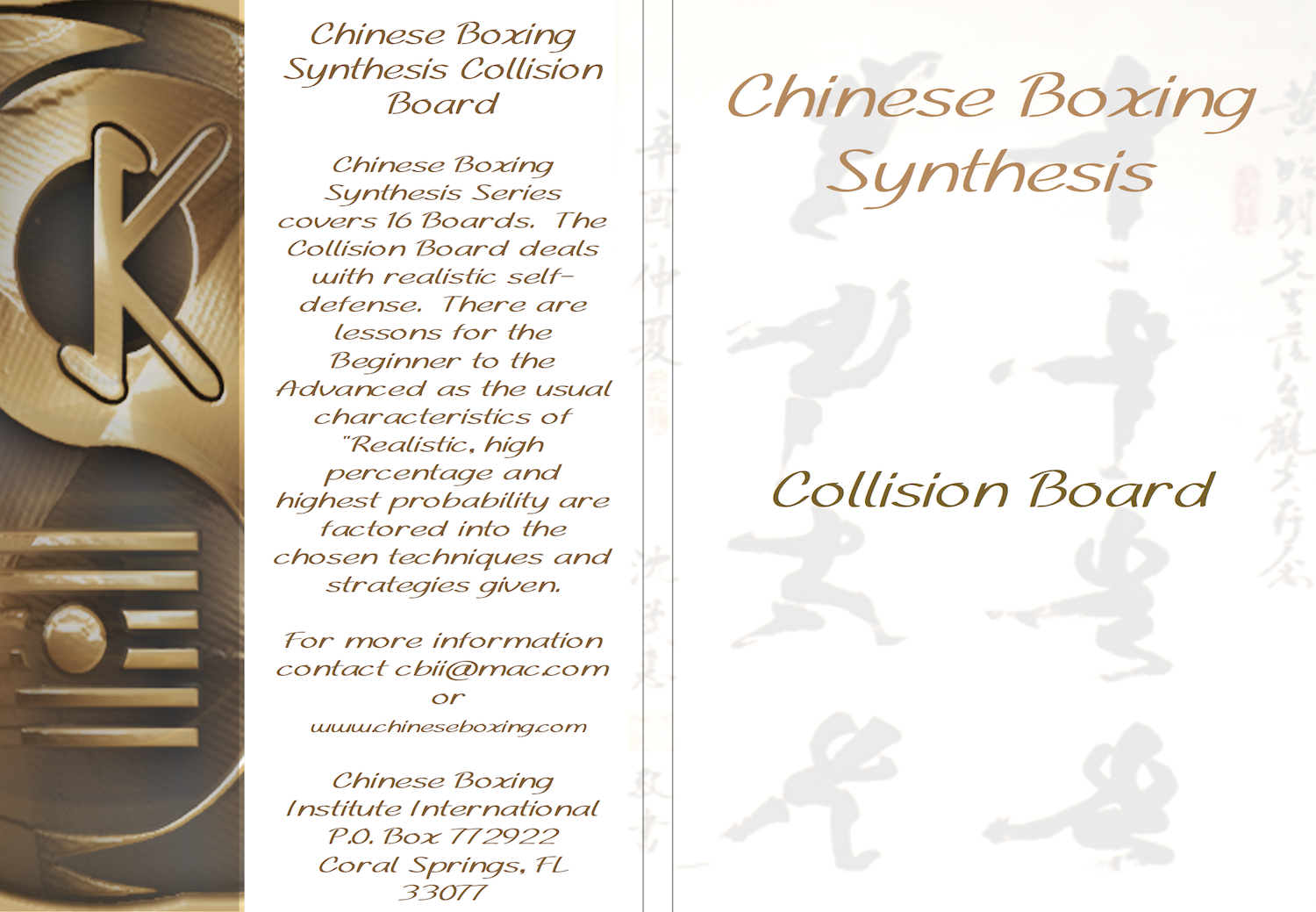
Collision
Collision Board is the study of realistic Self Defense. It covers material concerning the most important things a person needs in basic self-defense so it has things that a beginner needs to know and at the same time it deals with advanced aspects such as how to finish a fight. A person interested in self defense learns important things but things that don't require years of skill development. They try to effect an attacker and possibly get away or get help. For the experienced martial artist this board gives one things to efficiently finish a fight. This of course builds off of all the basics of the CBS.
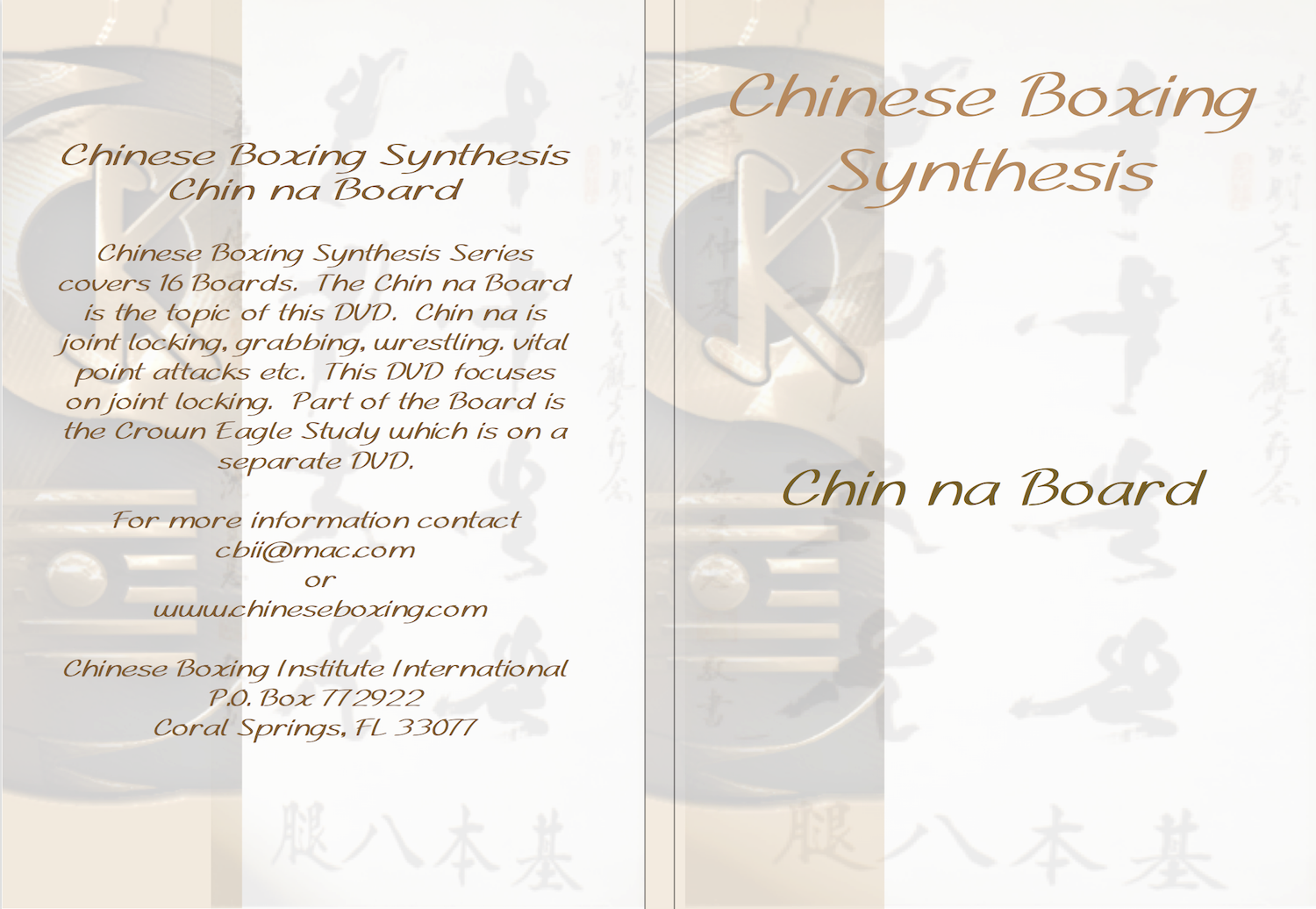
Chin na
Chin na is often thought of as small body grappling. It is but ours includes some of the larger body chin na as well. Chinese Wrestling or Shuai Chuai is partially contained in our Chin na curriculum. We have 9 general chin na techniques and then the last three points have our study of what is called Grand Chaining or Crown Eagle. We have a DVD on Crown Eagle and it along with this DVD complete the Chin na curriculum for the Chinese Boxing Synthesis.

Ground Fighting
Ground Fighting in Chinese Boxing is looked at from a realistic fight and not from a sport. It must take into account environments not friendly to moving on the ground in the same way one can do it on a mat or soft surface. When it is real fight for life and death and may involve fighing more than one person there must be a different strategy than in grappling sports. While one will use grappling as needed a system of priorities are developed in Chinese Boxing in all areas of study. At the least one must become comfortable in traversing the ground, coming up and going down. Many of the movements in the boards can be useful and certainly the touch development are needed in this study.

Projection
Projection is the study of how to get the most power out of any technique staying within balance and staying in the principle of changeableness. Power is achieved from the ground and gravity. Through the development of a good body that is relaxed yet firm one can provide a great conduit for energy to unitarily travel through the body and to project out of the body into a target. Project is not just studied for its own merits but how it would fit into an entire encounter. Percentages and probabilities are taken into account so that one is always making the optimal choice in combat regarding Projection.

Conditioning
Conditioning is a vital part of combat. When one loses his wind or strength due to the intense demands of a realistic fight the accuracy of movement wanes and basically a fighter becomes a shell of himself. So conditioning allows for the extra time a fight might take. Ray Hager, one of our Senior Teachers has helped in the development of the Conditioning Board and even has a blog on our site which deals with the topic even beyond the need within a realistic fight to a way of living that enhances the rest of your life.

Skill Drills
Skill Drills are the way the Chinese Boxing Theory is built into the human body and mind. Operating on the Theory which involves yielding to force and efficiency, the body needs to develop automatic responses to touch and at times sight. In order to build in the correct body reaction and not the wrong one, drills are done giving one the ability to practice the right response in repetition so that one can begin to execute the art. Of course this is tested in the Dueling Board. Even in the Skill Drill exercises shown one can increase the options to provide limited duels when one is ready. In the development of these reactions it is recommended that one progress from slow gradually to fast.

Duels
The Dueling Board is a very important part of the training in Chinese Boxing. After developing proper responses and instincts the dueling board provides a testing ground. Duels can be at all levels with all kinds of limits and at all speeds. It should be done in a progressive way friendly to learning. Since Chinese Boxing has no rules a successful fight will cause great harm to an important. If one is to duel then safety factors have to be done in order to allow a life of healthy practice. This dilemma is one of the great challenges in CBII curriculum and work. We use all kind of duels but we use the internal arts dueling as well as Wing Chun Chi Sao and then various types of sparring dueling.
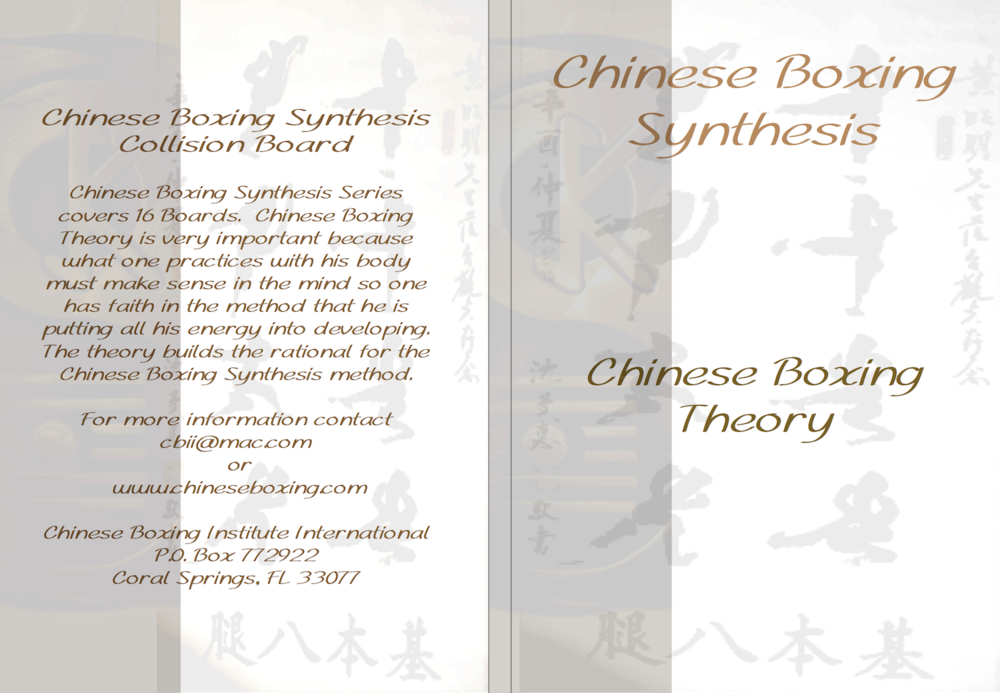
Fighting Theory
Fighting Theory Board lays out the master plan for the Synthesis art of Chinese Boxing. It is an art of high percentages and probabilities with the goal of realistic fighting. There are many aspects that belong to all arts. There should be an understanding of the importance of all aspects that belong ot all arts. Then there are principles which work together to provide the uniqueness of an art. Chinese Boxing certainly uses a set of principles to enhance the sound study of realistic combat using high percentage and probabilities.

History - Philosophy
The History/Philosophy Board examines the ideas that sprang from Chinese sources such as the I Ching and the Tao de Ching. The Yin Yang and the Five Element theory all effected the general principles of the arts. We also look at the history of several of the arts we use in the Synthesis such as Tai Chi Chuan, Hsing-i, Pakua Chang, Wing Chun, Fukien White Crane, Shaolin and the family art of Walu.

Mind Hit
The Mind